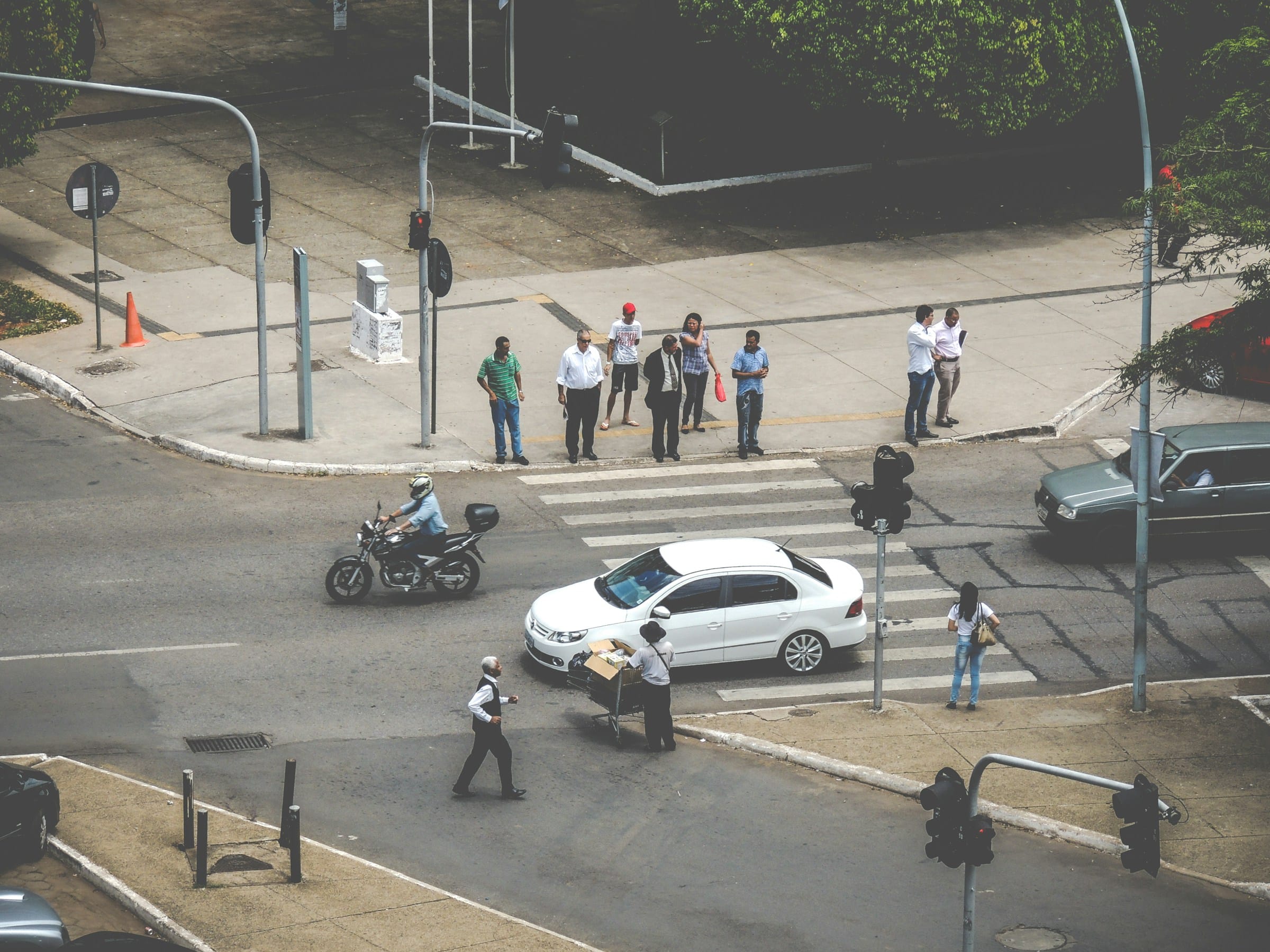How Can UK’s Public Spaces Be Redesigned for Better Accessibility and Inclusion?

Public spaces form an integral part of society, creating shared environments that mirror both the diversity and unity of communities. In the UK, these spaces span from parks and plazas to transit systems and buildings. However, they often fall short when it comes to accessibility and inclusion, leaving considerable room for improvements. Redesigning the UK’s public spaces to better accommodate everyone, regardless of age, gender, or physical ability, can result in a more inclusive society. With the right approach, these changes can be transformative, fostering a sense of belonging and equality for all citizens.
Public Spaces: The Accessibility and Inclusion Challenge
Fostering accessibility and inclusion in public spaces involves a more nuanced understanding of the role they play in society. These spaces can be designed and redesigned to address a variety of needs and preferences, moving beyond the conventional focus on physical access, towards a more inclusive approach that takes into account sensory experiences, cognitive abilities, and social interactions.
Dans le meme genre : What Are the Health Benefits of Urban Green Spaces for UK City Dwellers?
The challenge lies in creating public spaces that are not just physically accessible to people with mobility impairments, but are also welcoming to people across diverse age groups, ethnicities, and social backgrounds. These spaces need to be designed in such a way that they can cater to individuals, regardless of their socio-economic status, gender, or physical and cognitive abilities.
Principles of Inclusive Design in Public Spaces
Inclusive design principles aim to create environments that are usable, legible and welcoming to all. The idea is to design public spaces that are both physically and socially accessible, allowing everyone to participate in civic and social life. Key principles include, but are not restricted to, flexibility, simplicity, perceptibility, and tolerance for error.
Dans le meme genre : How to Create Engaging STEAM (Science, Technology, Engineering, Arts, Math) Programs in UK Schools?
Flexibility in design allows a range of people to use a space in various ways, catering to a range of abilities and preferences. Simplicity ensures that spaces are easy to understand and use, while perceptibility pertains to the use of different modes (pictorial, verbal, tactile) for redundant presentation of essential information. Tolerance for error minimises the adverse effects of accidental or unintended actions.
Redesigning Parks and Open Spaces
Parks and open spaces contribute significantly to the quality of life in urban areas. However, to make these spaces more accessible and inclusive, we need to rethink how they are designed. Parks should have clear and visible pathways, with varied textures for people with visual impairments. They should also include seating areas at regular intervals for those who cannot walk long distances.
Playgrounds should be designed to be universally accessible, with equipment that can be used by children of all abilities. The inclusion of sensory play elements can cater to children with autism or sensory processing disorders. Likewise, parks can incorporate quiet, shaded areas for people who are sensitive to light and noise.
Improving Accessibility in Public Transport
Public transport is crucial for the mobility of many, but it can be a challenge for those with disabilities. To improve accessibility, transport services should offer clear information in multiple formats, such as audio announcements and visual displays. Stations and platforms need to be equipped with ramps, lifts, and tactile paving.
Improving the design of buses, trams and trains is also important. This can include providing priority seating, accessible ticket machines, and more space for wheelchairs and prams. Staff training can also ensure that employees are equipped to assist passengers with disabilities effectively.
Enhancing Inclusion and Accessibility in Public Buildings
Public buildings like libraries, museums, and government offices are often intimidating and difficult to navigate for people with disabilities. To enhance accessibility, entrances should be wheelchair-friendly, and buildings should be equipped with lifts or ramps. Doorways and corridors should be wide enough to accommodate wheelchairs, and signage should be clear and readable.
Inclusion can also be improved by providing quiet rooms for people with sensory sensitivities, and tactile exhibits or guided tours for the visually impaired. Staff should also be trained to assist visitors with different needs.
Redesigning the UK’s public spaces to be more accessible and inclusive is not just a matter of compliance with legislation; it’s about creating environments where everyone can participate fully. By embracing the principles of inclusive design, we can create public spaces that reflect the diversity of our society, and foster a sense of belonging for all.
A Case for Inclusive Social Infrastructure
Inclusive social infrastructure refers to the spaces and facilities that bring people together, fostering a sense of community. This includes schools, health centers, community hubs, libraries, and sports facilities. If designed inclusively, these spaces can cater to people of all abilities, ages, and backgrounds, thereby promoting social cohesion and mutual understanding.
Bearing in mind the diversity of users, inclusive social infrastructure should be designed to be easily navigable, offer a variety of features and services, and cater to different cognitive and physical abilities. For instance, schools should not only have accessible classrooms but also consider the needs of all students in the design of playgrounds and sports facilities. Health centers should have clear signage, ramps for wheelchair users, and sensory-friendly waiting areas for those with sensory sensitivities.
Community hubs and libraries can be made more inclusive by providing accessible computer stations, offering programs and services for people with disabilities, and ensuring their venues have features such as induction loops for hearing aid users. Sports facilities, on the other hand, should have equipment that caters to different abilities, and offer comprehensive training programs for people with disabilities.
The design of inclusive social infrastructure requires a multi-disciplinary approach, involving urban planners, architects, social scientists, and local communities. Through consultation and collaboration, these parties can come up with designs that meet the needs of all citizens, thereby enhancing inclusion and accessibility in the UK’s public spaces.
Policy Recommendations for Inclusive Public Spaces
Policy interventions can play a crucial role in promoting the redesign of the UK’s public spaces for better accessibility and inclusion. Here are a few recommendations:
- Legislation: Authorities can enact laws that mandate inclusive design in public spaces. This can include specific requirements for accessibility features in new buildings and infrastructure, as well as the retrofitting of existing facilities.
- Guidelines: The government can issue guidelines that outline the principles of designing inclusive public spaces. These can serve as a reference for urban planners, architects, and other stakeholders involved in the design process.
- Funding: Government funding can be allocated to projects that aim to make public spaces more accessible and inclusive. This could be part of a larger initiative to promote social cohesion and equity.
- Training: Authorities can also invest in training programs for architects, urban planners, and other professionals involved in the design of public spaces. This will ensure that they are equipped with the necessary skills and knowledge to design inclusive environments.
- Public participation: Finally, the government should encourage the involvement of citizens, especially those from marginalized communities, in the design process. Their insights and experiences can contribute significantly to the creation of more inclusive public spaces.
Conclusion
The creation of more inclusive and accessible public spaces is a crucial step towards a more equitable society in the UK. By incorporating principles of inclusive design into the planning and development of these spaces, we can ensure that they meet the needs of all citizens. Policy interventions can further drive this process, fostering the creation of public spaces that are truly representative of the diversity in the UK.
We must remember, however, that while physical design is important, the true measure of accessibility and inclusion lies in how these spaces are perceived and experienced by their users. Therefore, continual evaluation and feedback from users should be an integral part of the planning and design process. With a collective effort and a shared vision, we can create public spaces that celebrate diversity, promote inclusivity, and nurture a sense of belonging among all citizens.
